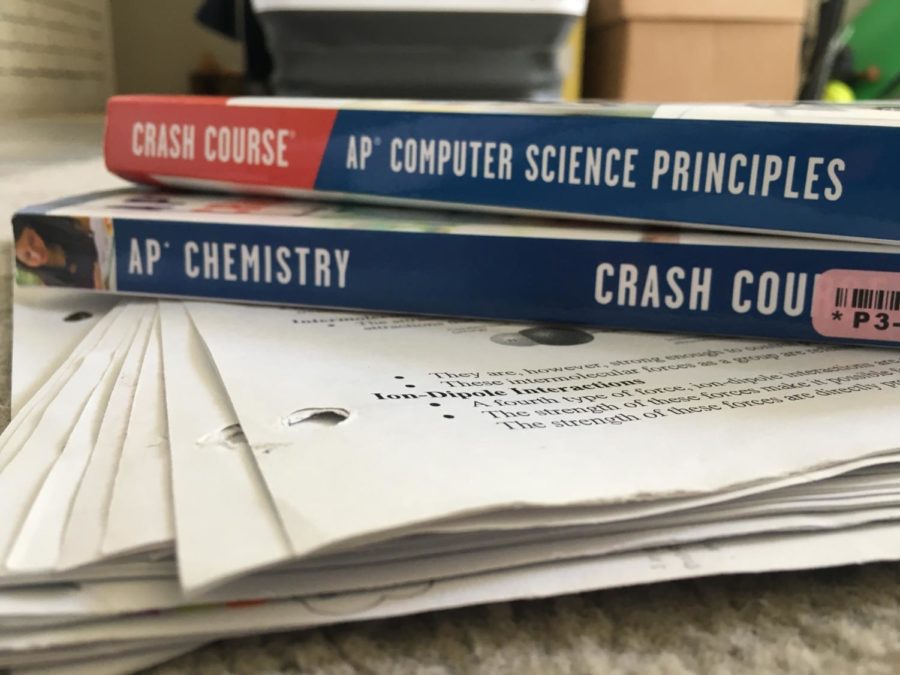Before the week of May 6, students in Advanced Placement (AP) classes rush to study all of the course’s material in preparation for the big AP exam.
AP tests assess the student’s knowledge on the subject and determine whether the student should be given college credit for the course.
Students will be able to see their results in July through their College Board account. When looking for their scores, only a number will be shown. The numbers range from 1 to 5, a 5 meaning that the student is extremely well qualified for college credit. Most colleges will give credit for a course if the student scored a 4 or higher, but some do accept a score of 3 as well.
The AP exams include all of the class curricula that was taught throughout the year. Usually, to prep students, AP class teachers hold a mock AP test the week before the exams start. Since the mock exam covers all of the class material, it usually counts as the final for the second semester, yet AP teachers are still required to give students a final at the end of June. In essence, AP students have to take two finals, and on top of that, most of them choose to take the AP exam, which also covers the entire class curriculum.
Some may argue that new material might be taught between AP exams and the end of school, and because of that, a final should be held in June. However, this is mainly false because the primary goal of AP classes is to prepare the students for the AP exam. Consequently, AP teachers have already taught all of the class material so that the students are ready for the exam. So between the end of May and finals week, AP students don’t learn anything new. And for finals week, they are forced to review all of the material that they already studied for the AP exam again.
Some teachers just give an easy final or a simple activity to do instead of an actual final. But, the period lasts for around two hours, and whatever activity the teacher gives usually takes less than two hours to do.
For the rest of the period, both students and teachers have nothing to do. So what’s the point in forcing students to come if they probably aren’t going to do anything? Students are much better off not coming to school. That way, they could have more time to study for their other non-AP classes, and teachers could have more time to update the grading book before grades are due.
There does, however, tend to be a dilemma when a student in an AP class decides not to take the AP exam. Many students don’t want to spend the time or money that the AP test requires, and that is acceptable. Taking the AP exam is not a requirement for the AP class. However, they still would have to take the AP mock exam (which is most often the final of the course) since the teachers give it to everyone in the class regardless if they are taking the actual exam or not.
Once again, AP students would take an unnecessary final. If the AP teacher, for whatever reason, did not give a mock AP exam, then the student who didn’t take the real AP exam can just take a final in June. But the rest of the students who took the AP exam, they already studied all of the class material, so they shouldn’t have to take yet another cumulative assessment.
Spare the AP students. They already put in a lot of effort to prepare for both the mock AP exam and the real AP exam. They do not need to spend even more time studying for another final test.
This editorial reflects the views of the Scot Scoop editorial board. This editorial was written by Samantha Chu.



